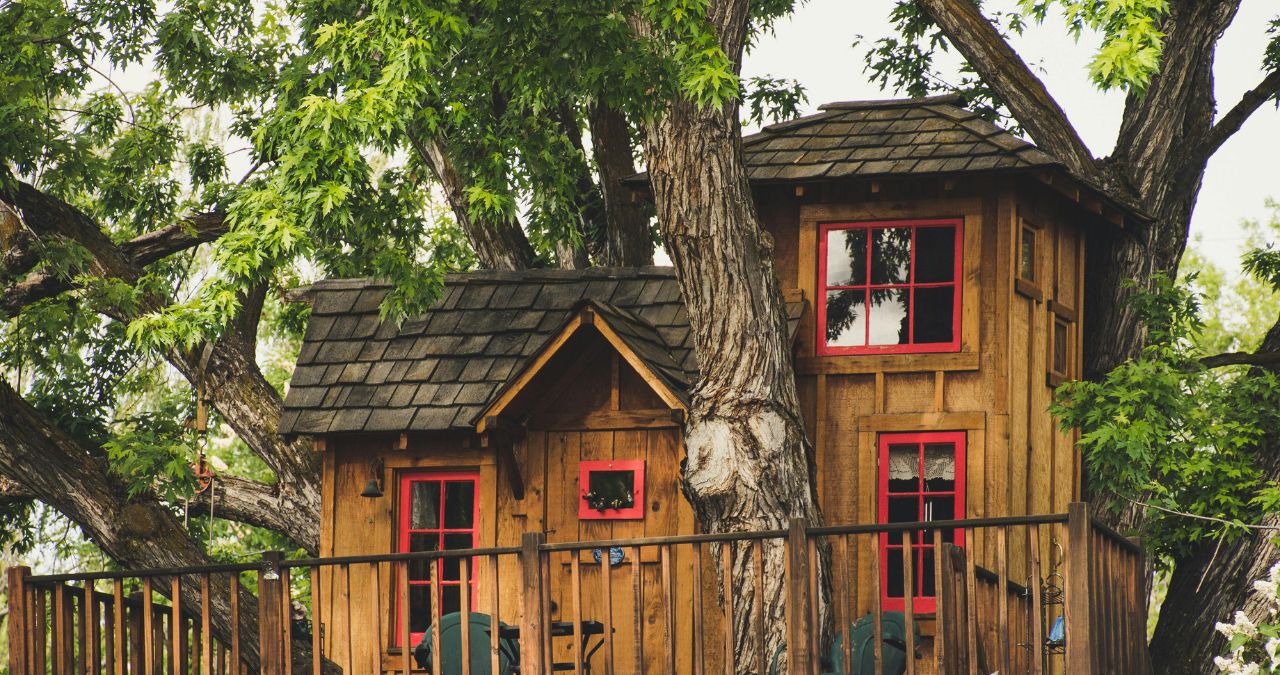How to Pick a Tree For a Treehouse
- 19
- Apr
Treehouses have been part of human history and our childhoods for generations. Do you have any good memories of reading or hiding in an old treehouse somewhere? Do you want to pass that experience to the next generation? Are you building or prepping and want to be sure you select the right tree as shelter? It turns out that a good treehouse takes some thinking. Here is a list that can help you choose the perfect location and ensure you choose the right tree for your treehouse.
How to Pick a Tree For a Treehouse
Choose A Good Area For The Treehouse
Treehouses require stability and should be rooted in an area without too much obstruction, ideally with a great view over the treetops. Everyone has their own idea of what makes the perfect treehouse, but you’ll often know it within seconds of seeing it.
If you’ve spotted a large tree nearby that looks like it could support a heavy-duty construction, you might have found your perfect treehouse tree. If you haven’t, then transplanting trees is a potential option. In this case, you want to find the perfect spot.
Ensure there’s enough room around the treehouse, covering both the bottom and the top.
Choose A Strong, Sturdy Treehouse Tree
You can’t build a treehouse with just any tree type. There are factors in choosing a tree that determines how stable, warm, and spacious your treehouse will be. You want to choose a strong, sturdy tree type for your treehouse. Most mature trees that are healthy are suitable for tree house construction.
Both coniferous and deciduous trees can be used to build tree houses. Here are some examples of good treehouse trees:
- Apple
- Douglas Fir
- Maple
- Oak
- Any long-standing tree that you can tell has a lot of history – and no intention of going anywhere.
Treehouses need a strong foundational base, which lies in the tree’s roots and structure. Can you name some trees that would make a bad treehouse? Willow, boxelder, and fruit trees are examples of less suitable trees for supporting tree houses. These tree species are more brittle and prone to damage or breakage in strong wind.
A good treehouse can’t be built too high or where it might affect stability. You’ll want to consider these things before climbing too high up for its construction. Outline and plan, or as people often say, measure twice and cut once.
Check For Obstacles Around The Tree
Clean up any immediate obstacles around the tree, including loose debris, branches, and scrap or trash. Not only does it look better, but it allows you to examine the critters around the tree and its general health.
Are there any immediate obstacles? Remove them! Obstacles make building (and using!) your future treehouse more difficult.
Examine The Tree For Insect Infestations and Wildlife
The best treehouses don’t compromise their environment but augment or benefit what you’re already working with. Examine your prospective future treehouse. Be aware of the natural elements found in and around the tree you plan to use.
Building a treehouse can interfere with nests, like birds or squirrels, but with careful planning, it doesn’t have to. Trees should be cleared from unwanted pests first, then ensure that any other wildlife living in the tree isn’t interrupted by your future treehouse build.
Arbor Hills Tree Farm & Nursery Omaha
We provide the Highest Quality Field Grown Nebraska Trees and Shrubs – directly to our customers, at the lowest possible price.
Whether you are looking for trees for:
- new home landscaping
- wind blockage
- commercial or residential
Simply select the tree(s) you want and they will be ready for pickup or delivery the following Saturday Morning. The trees are easy to handle and plant. Click here for more information.



